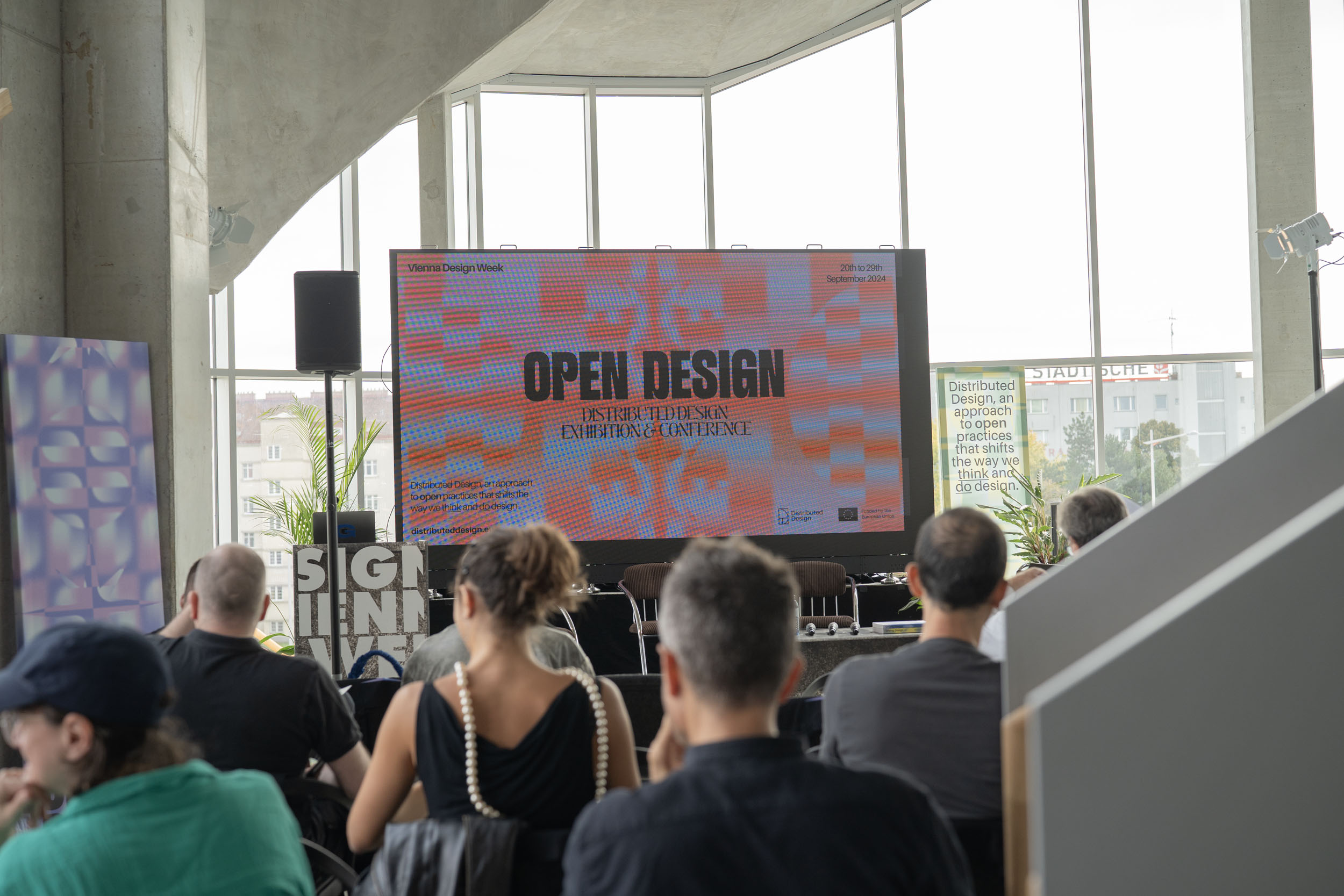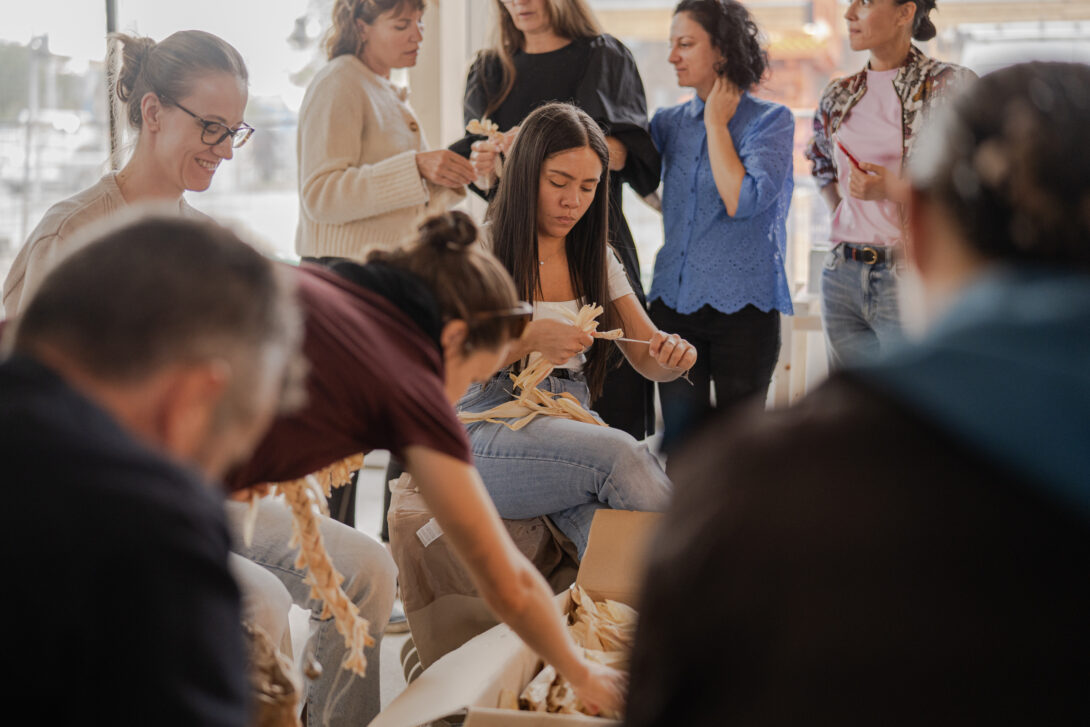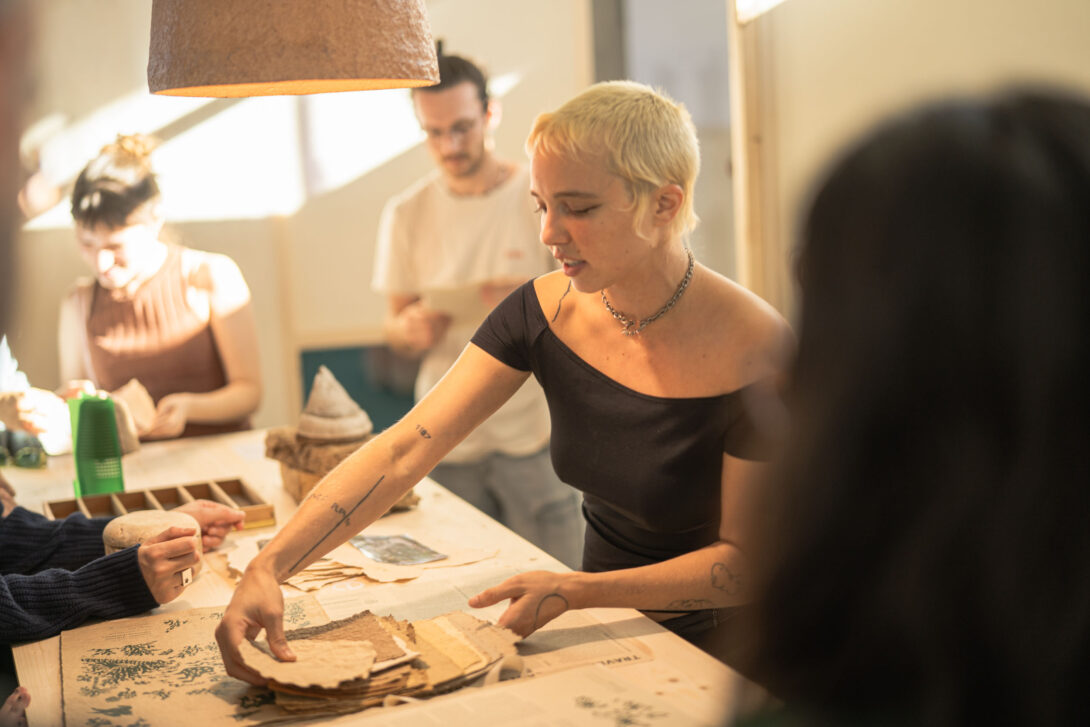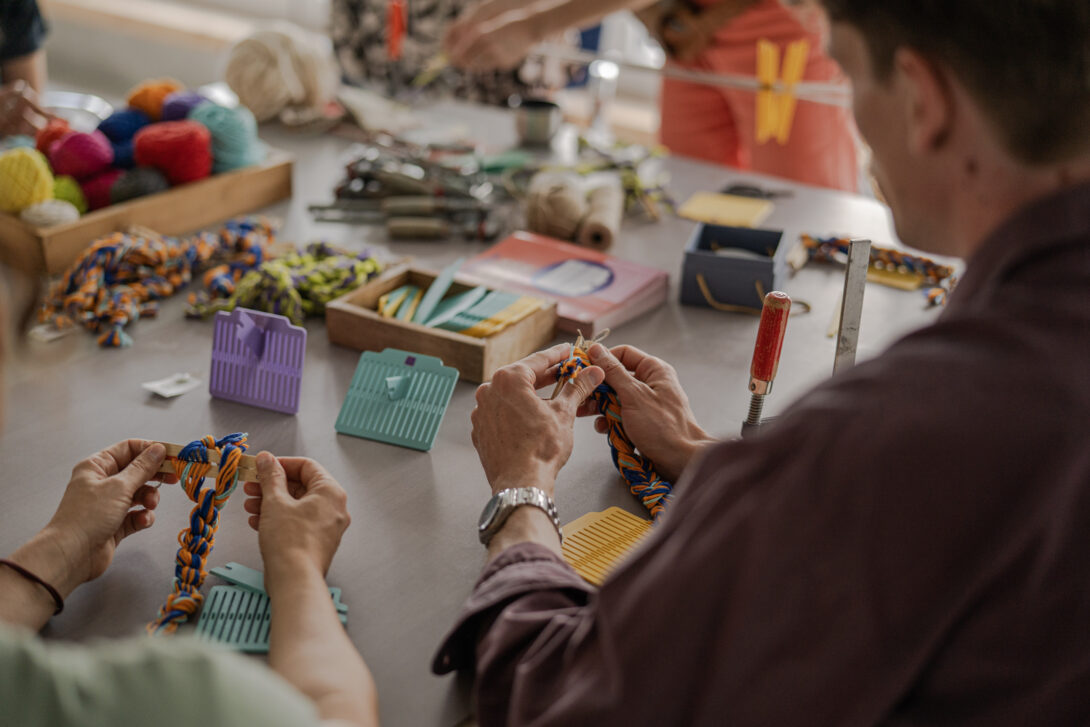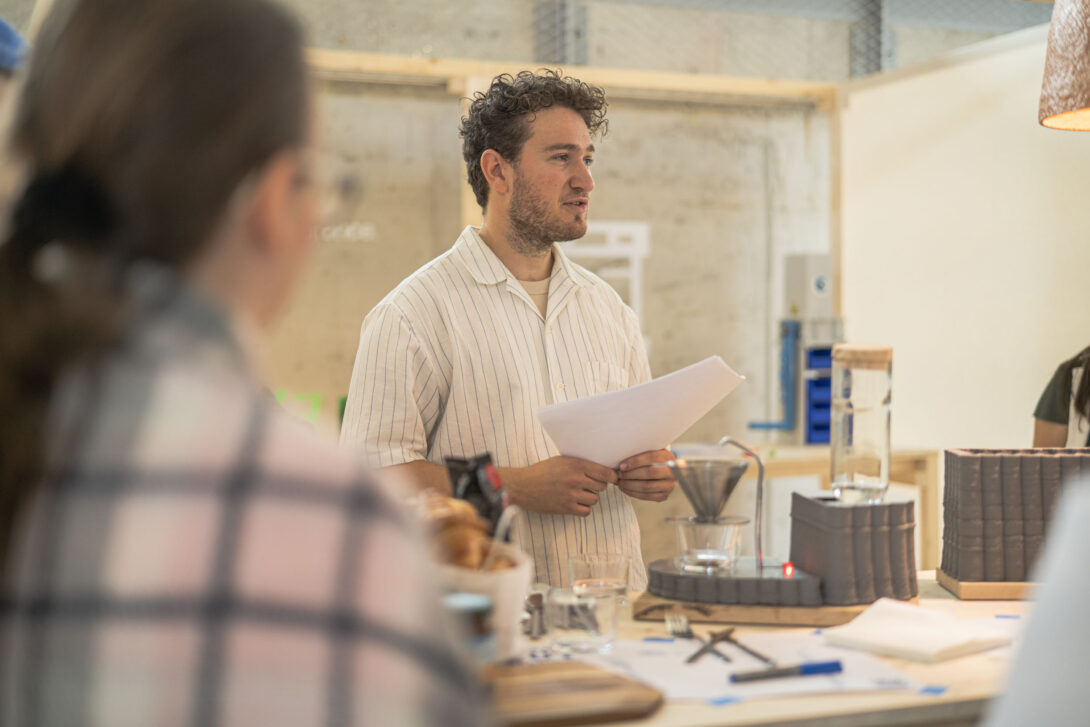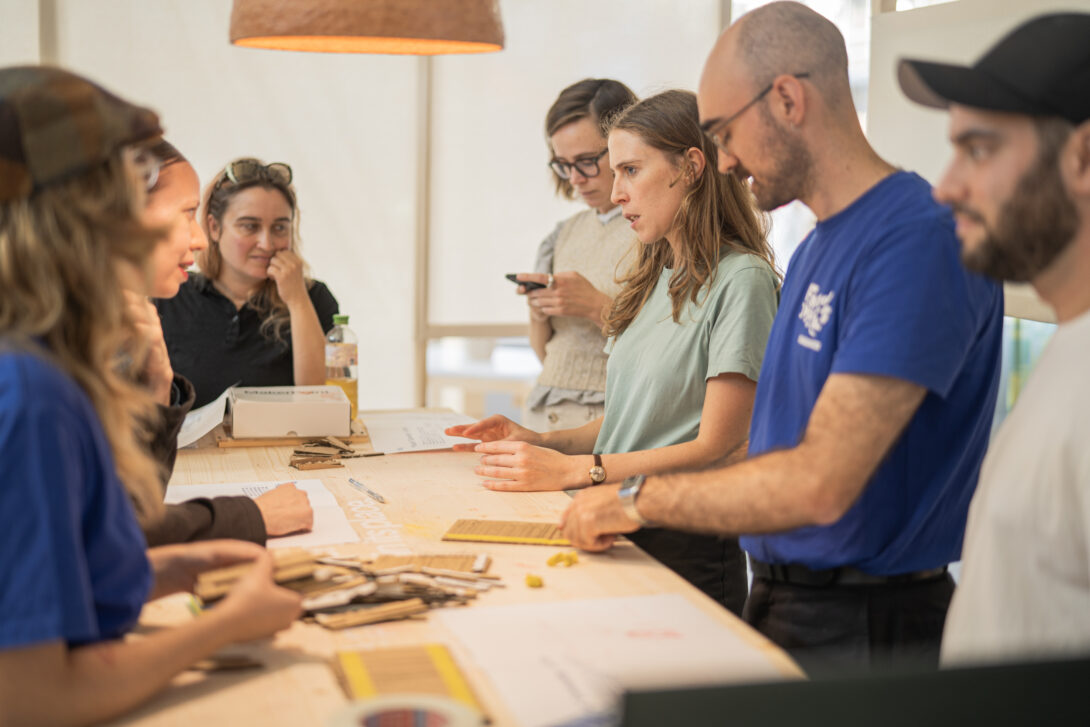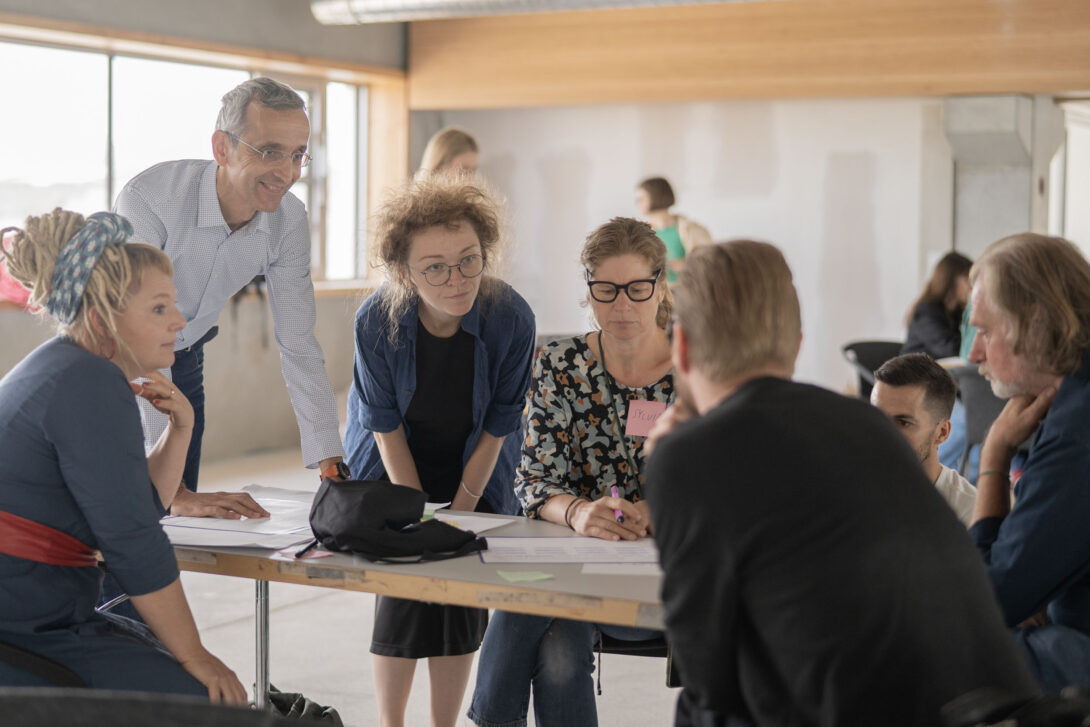#distributed design #Vienna Design Week #open design #regenerative design
Distributed Design Conference at Vienna Design Week
On 26th September, the Distributed Design Platform hosted a day-long conference at Vienna Design Week, centred on the theme of Open Design. This event brought together a series of conversations, workshops, and discussions that challenged conventional paradigms of design and production. Organised in collaboration between the Platform members, the day offered a space for fresh perspectives, exploring the intersections of regenerative design, climate action, and social impact.
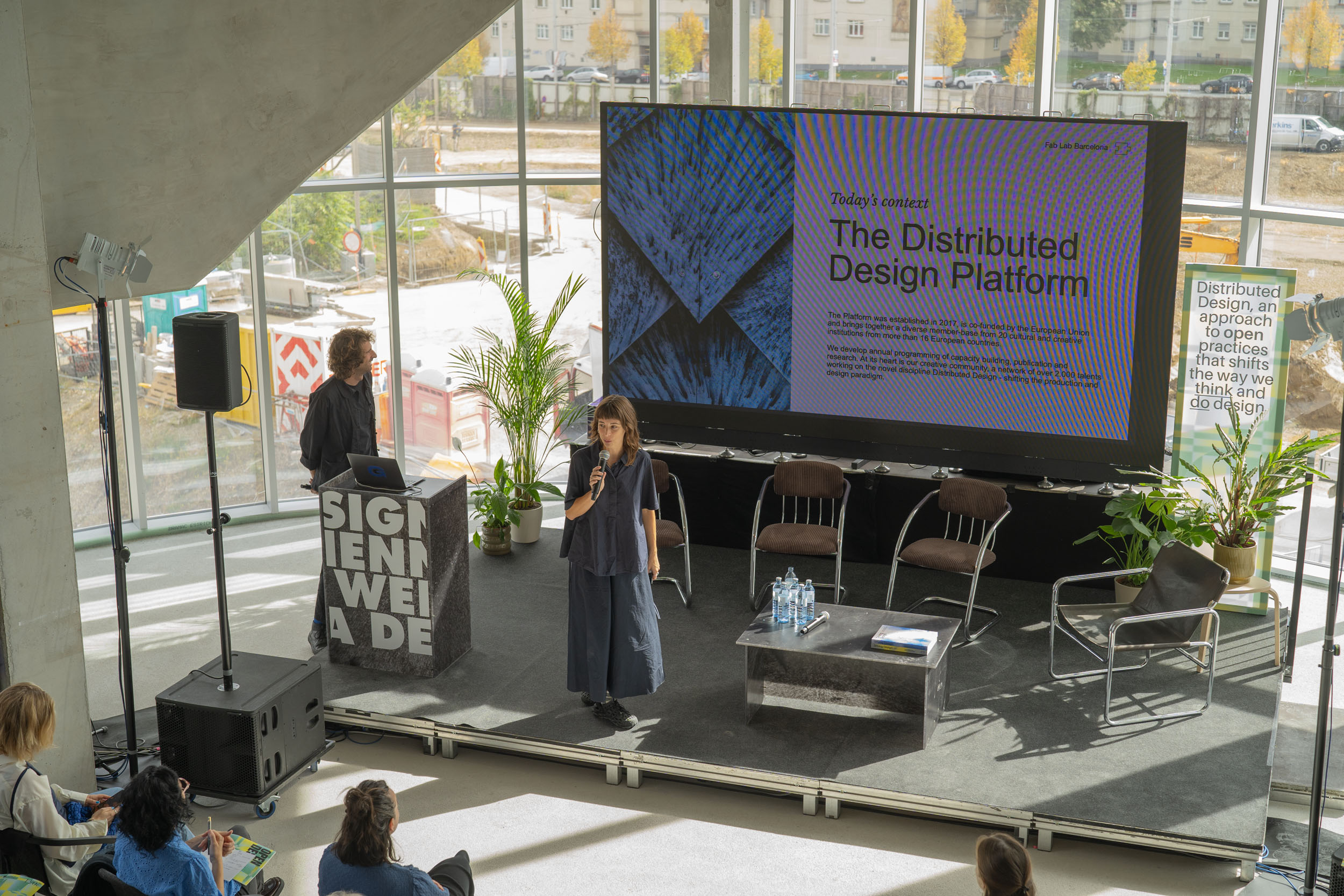
A collaborative approach
The design and implementation of the conference was done through a collaborative effort between members of the Distributed Design Platform. Over several months the Platform members have been meeting online, exchanging ideas and approaches to achieve a successful conference. To help with the relevance of the activities to the public, an open call was launched in the community for people to contribute with their ideas and proposals for the conference and workshop programme as part of the Vienna Design Week.
A series of talks and workshops that reflected diverse viewpoints and innovative practices in design was then curated and presented as part of the Vienna Design Weel programme. Over ten workshops, all free to the public, were hosted by members of our Creative Talents community, who generously shared their methods and creative processes. These sessions provided attendees with a unique opportunity to engage directly with the tools, skills, and thinking that are shaping the future of design.
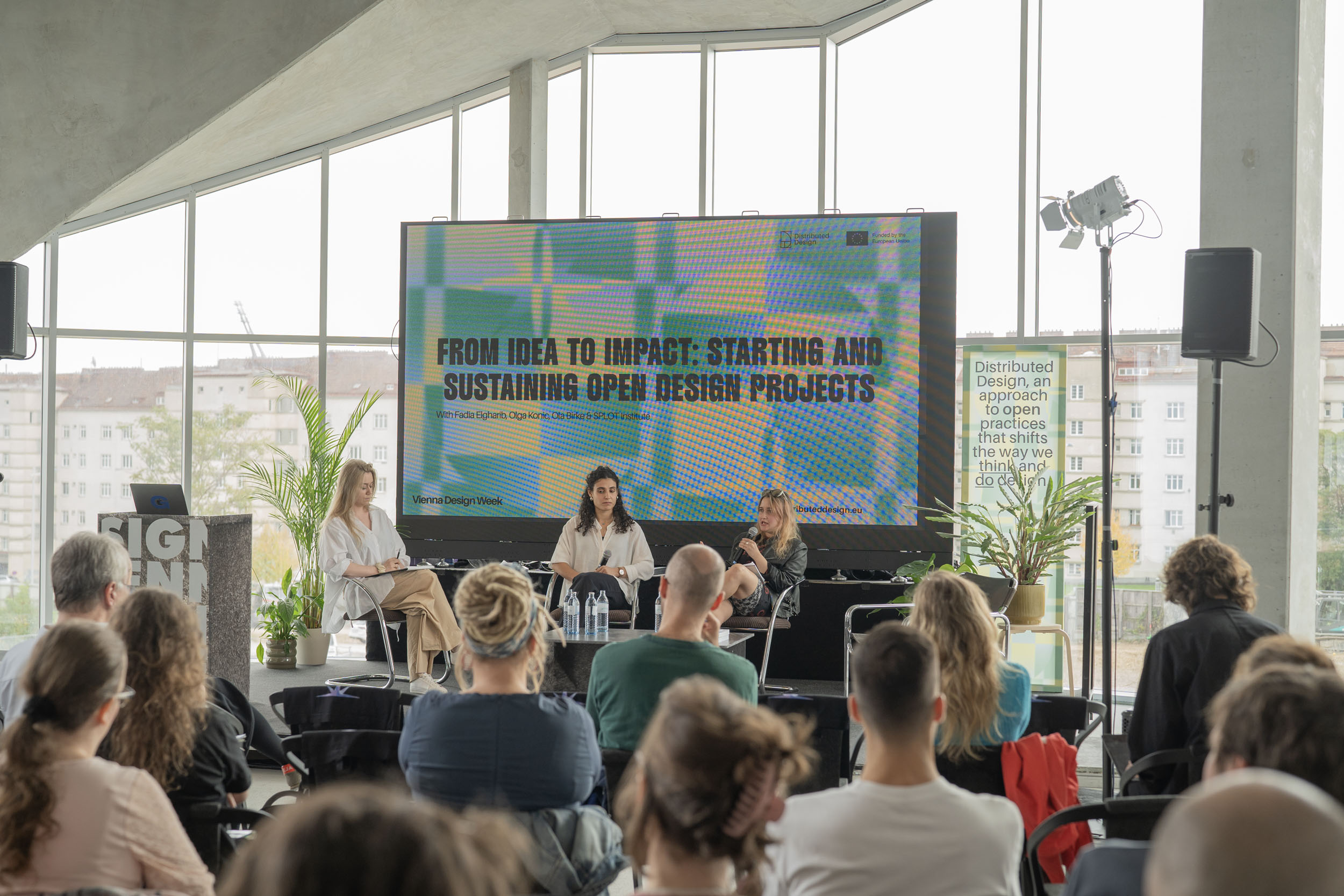
Alice Rawsthorn on tackling global challenges through design
A standout moment of the day was the inspiring keynote by Alice Rawsthorn, the award-winning design critic and author of influential works such as Design as an Attitude and Design Emergency: Building a Better Future. During her presentation, Alice illuminated design’s potential to address the complex social, political, and ecological challenges we face today.
Alice’s ability to blend constructive critique with optimism, offered us a hopeful vision of how design can contribute to positive change. Her examples of design-driven solutions – many of them deeply responsive to local challenges – showed how design can be a powerful tool for addressing some of the world’s most pressing issues. Hearing how thoughtful design can act as a catalyst for positive change, was inspiring. This talk, made possible through our collaboration with Vienna Design Week, was undoubtedly a highlight of the day.
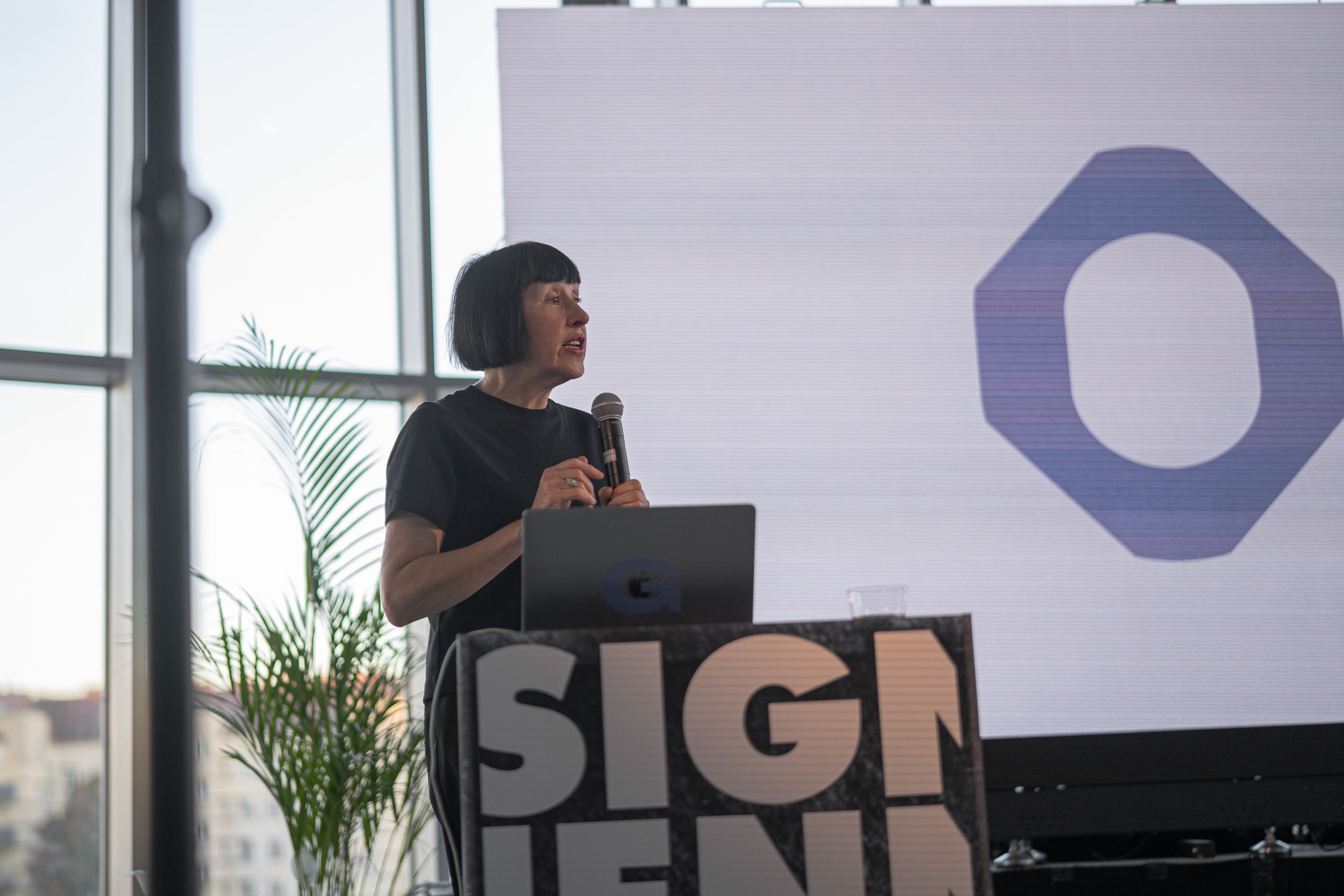
An exhibition as a collaborative space for discussion and action
In addition to the conference, we were eager to present a collaborative exhibition at the Festival Headquarters, located at Village im Dritten. The exhibition featured over 25 creative projects by community of the Distributed Design Platform, each offering a unique perspective on how design can address critical issues.
This exhibition was designed to provoke reflection on how design can contribute to both socially and ecologically sustainable solutions. At its heart, posing the question: How can design help us rethink our relationship with the materials, environments, and communities that shape our lives? Projects, such as Slow Lab, which redesigns tools of our daily life to integrate in our rituals a vision of a fossile-fuel free future, Amber Grain Embroidery using biodesign approach for fabricating textiles using root-based materials, and Mad Plastic, a collaborative effort to equip the upcoming wave of recyclers around the world with the necessary tools and expertise to harness the potential of recycled plastic, exemplified possibility of designl to foster new, more circular ways of living.
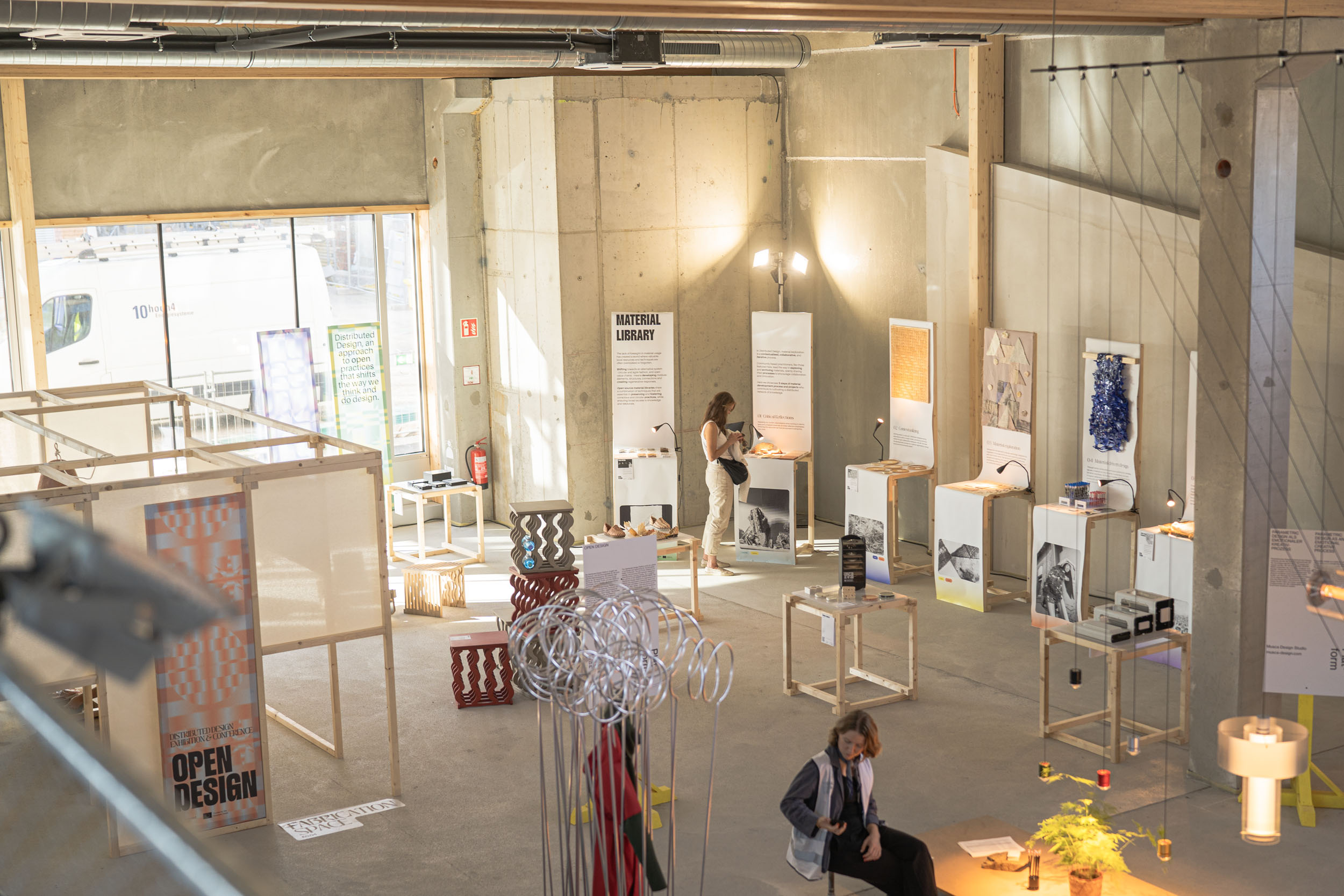
Key learnings from the Conference Day
Throughout the day, we engaged in discussions about the future of design, touching on themes, including open-source design, collaborative practices, regenerative design, and creative activism.
These topics reflect on a growing desire to use design as a tool for disrupting the status quo and imagining more equitable, resilient futures. We discussed how technology, when viewed through a collaborative lens, can empower communities and foster long-term positive change.
The conference served as a timely reminder of how design can be a powerful catalyst for rethinking our systems and futures. By embracing open, inclusive, and circular approaches, we can create solutions that are not only innovative but also socially and ecologically responsible.
